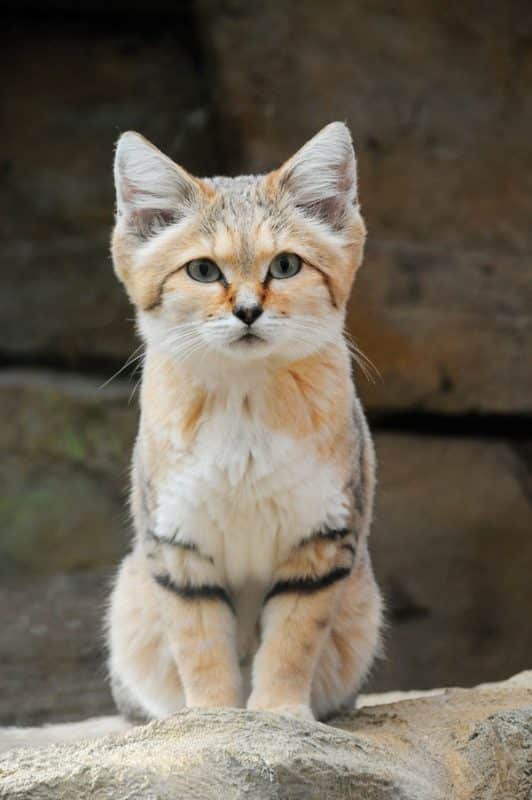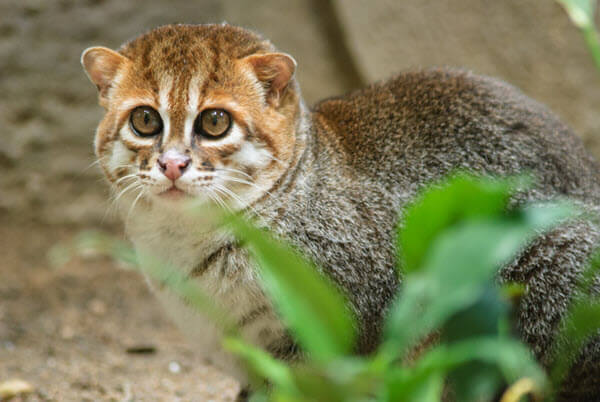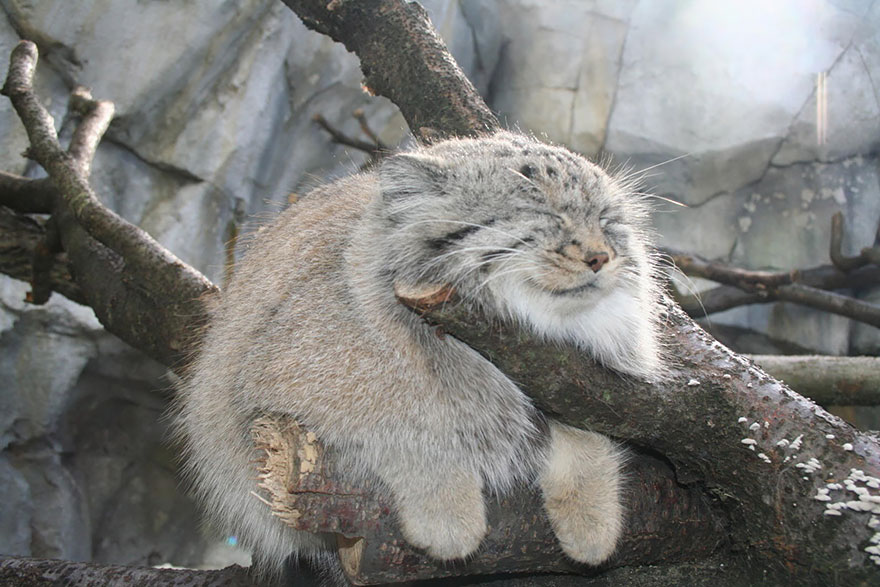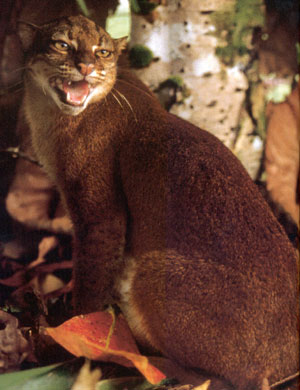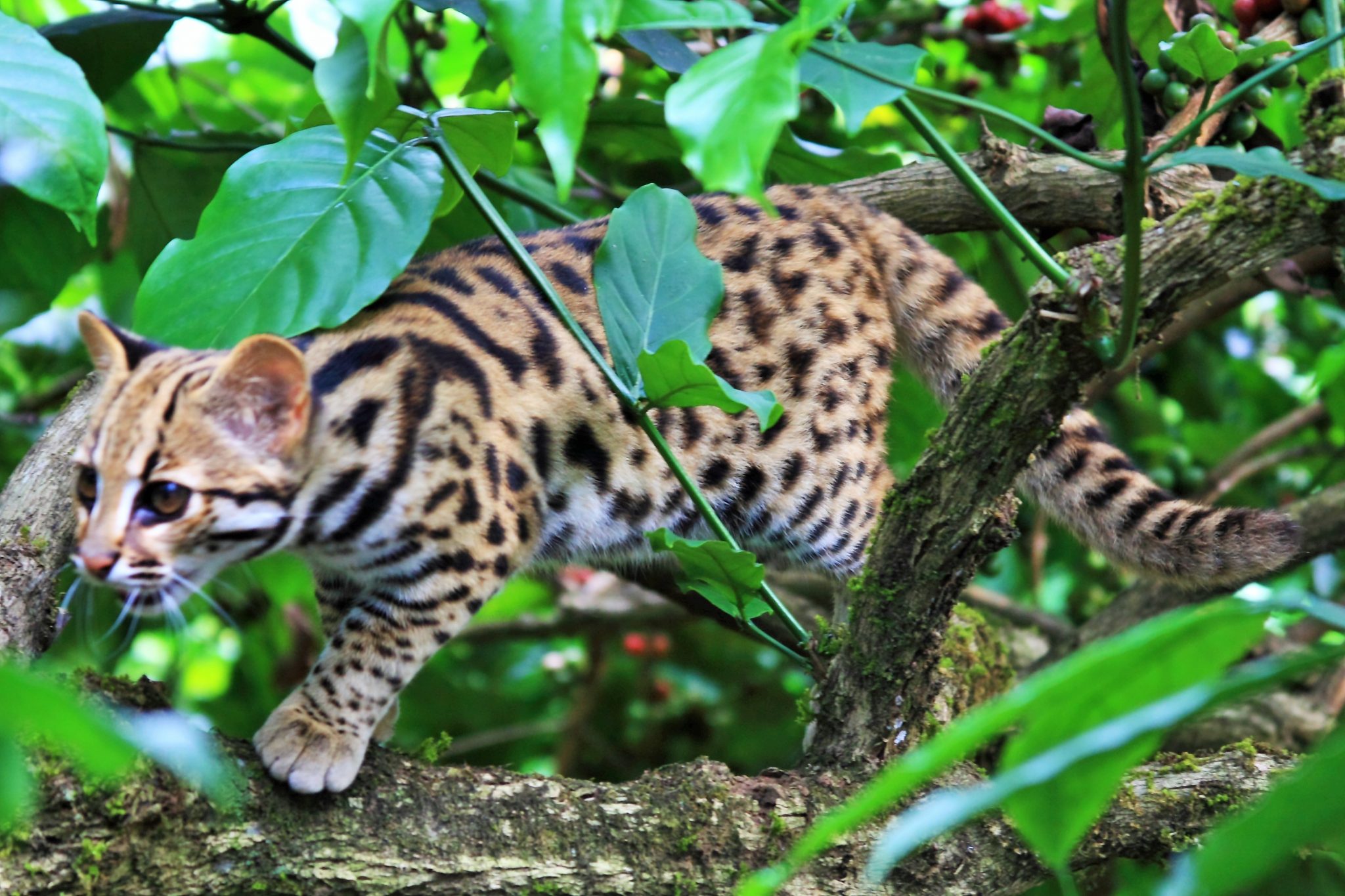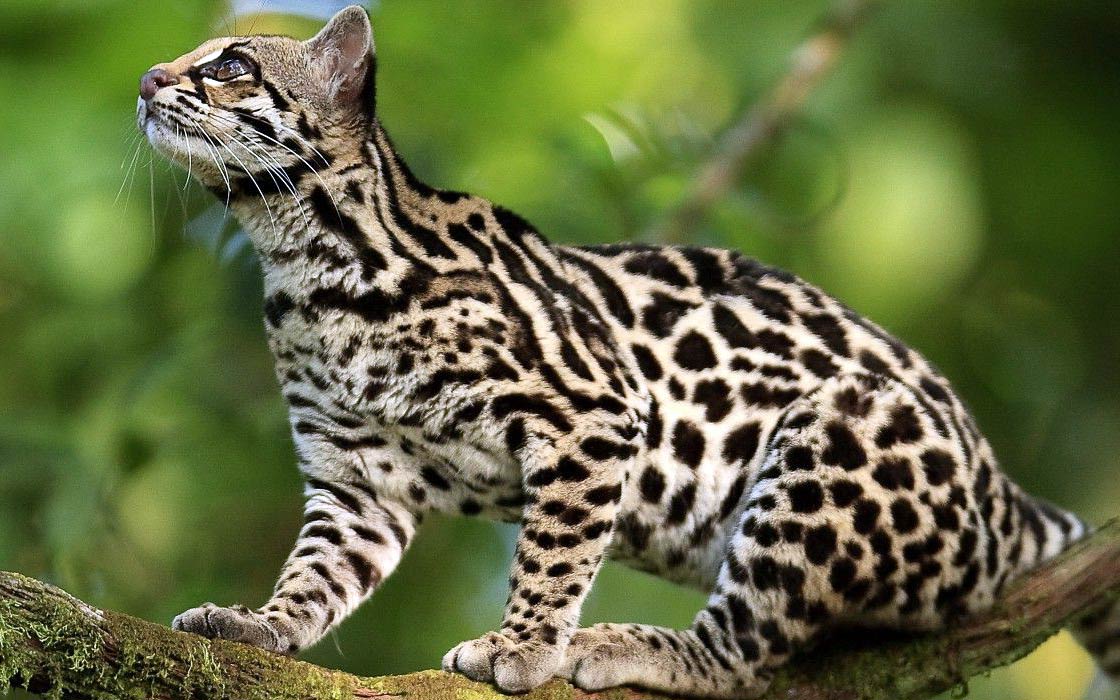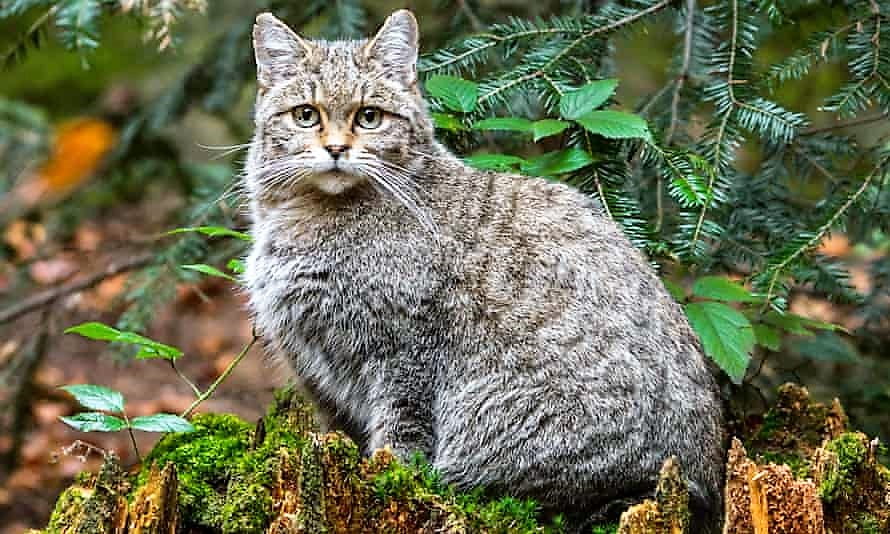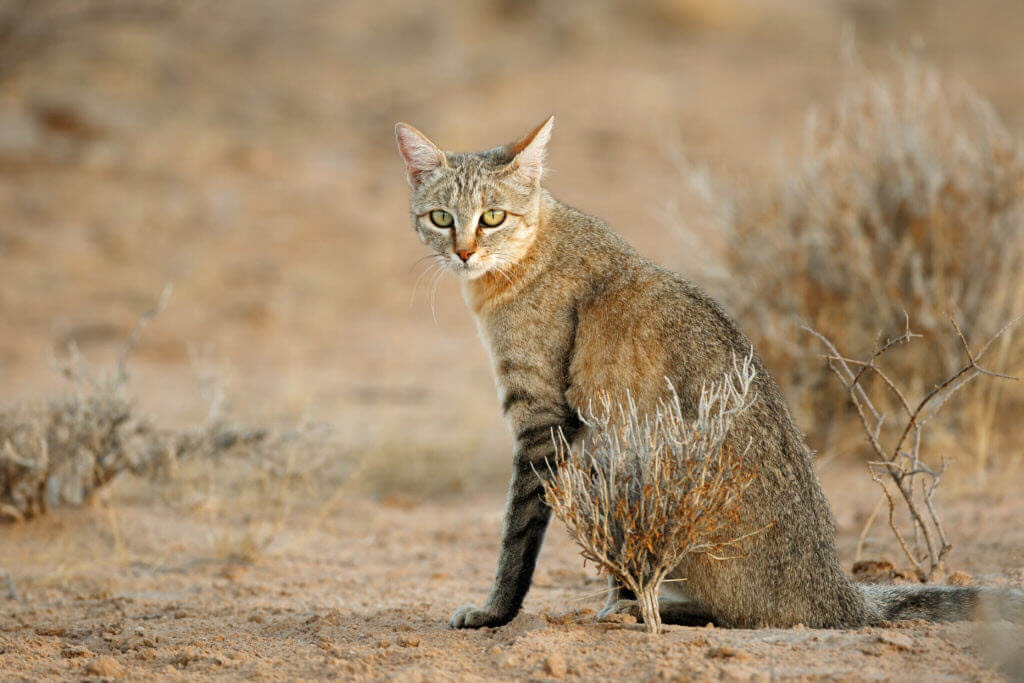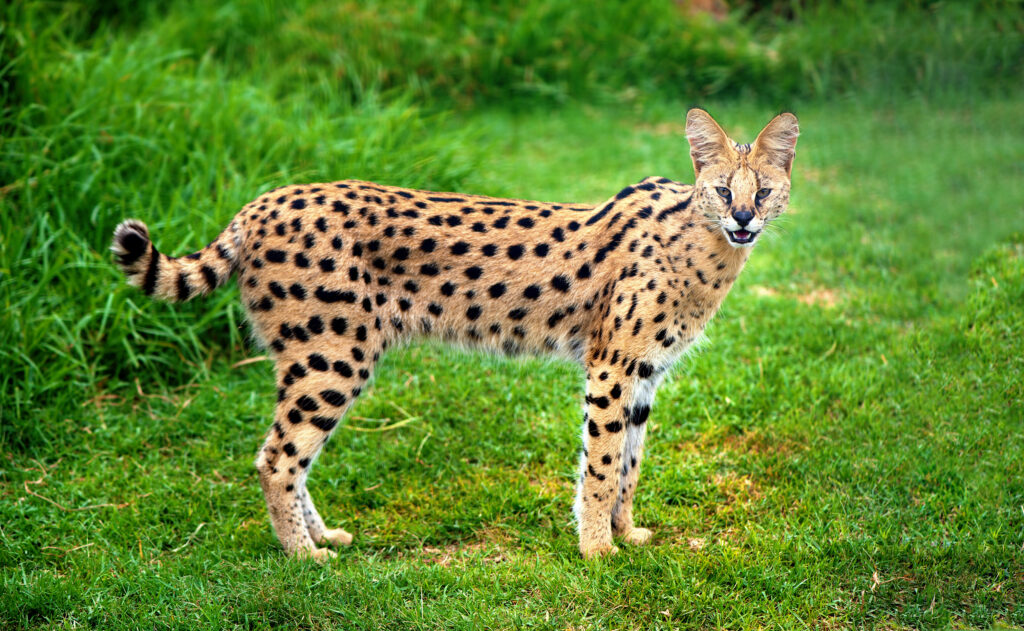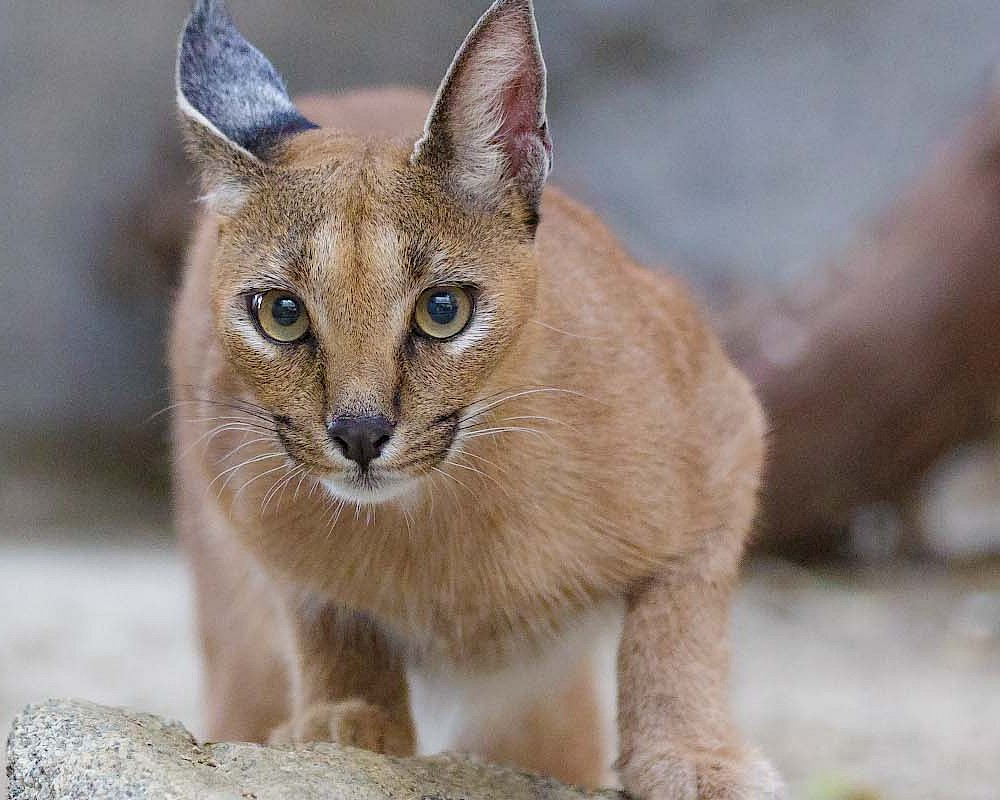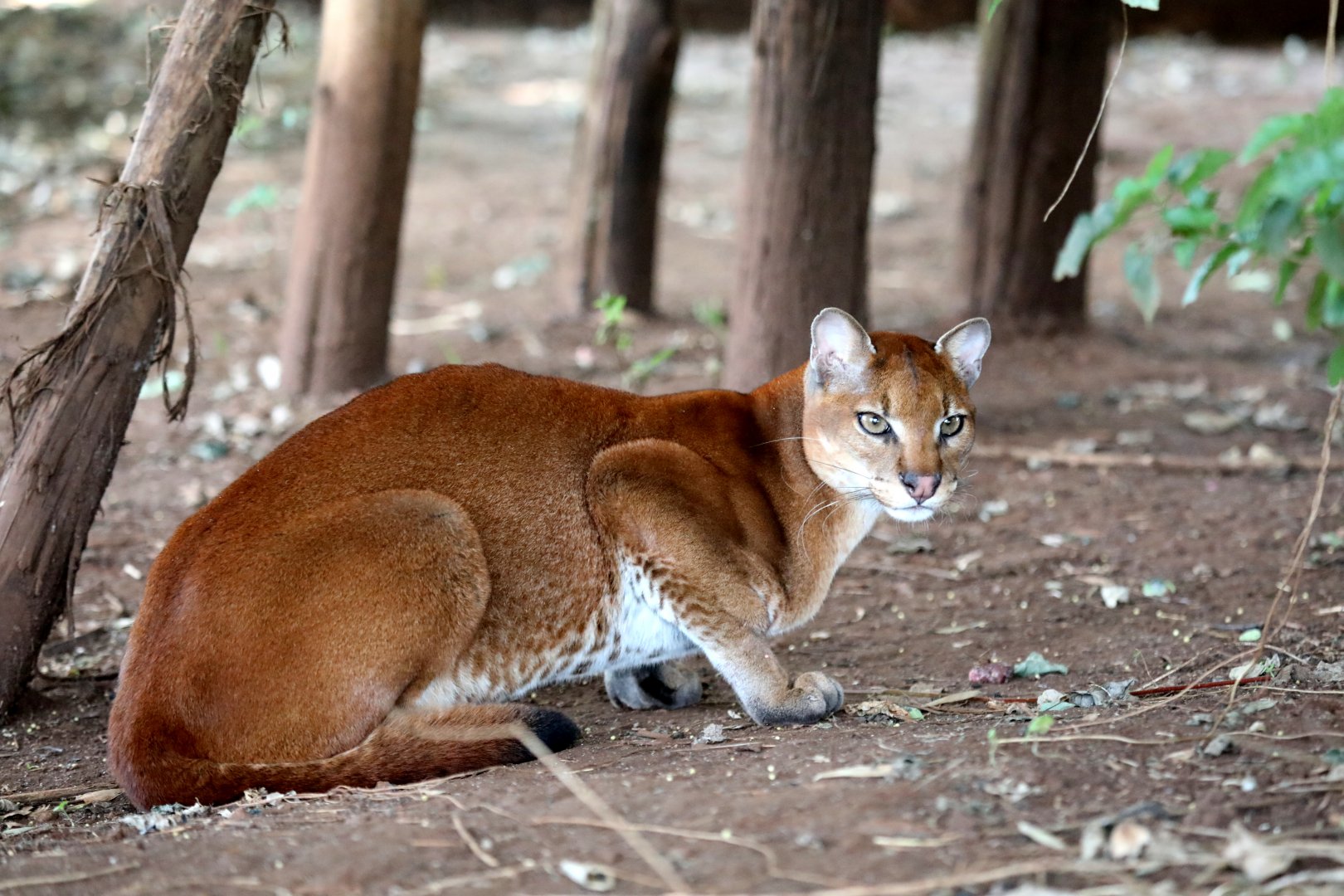Virtually eighty percent of the world’s total species of wild cats are small and medium wild cats, which can be found in Asia, Africa, Europe, and North, South, and, Central America. While medium-sized wild cats are twice the size of the average house cat, most small wild cats are the size of a house cat. Furthermore, while many small wild cats are popular, others are extremely rare and can't even be found in zoos. But luckily, you can at least see them in pictures to know they exist. That said, below is a list of some small and medium-sized wild cats around the world.
Small Wild Cats
1. Kodkod
The Kodkod is the smallest felid species measuring 15 to 20 inches in head-to-body length, weighing 4 to 5 pounds, and standing up to 9 inches tall. Listed as Vulnerable on the IUCN Red List, Kodkod cats live primarily in central and southern Chile, with a lifespan of more than 11 years.
2. Sand cat
This small wild cat was named "Sand cat" because it lives in sandy and stony deserts far from water sources. Listed as "Least Concern" on the IUCN Red List, the Sand cat can be found in southwestern Pakistan, Central Asia, Morocco, Algeria, Niger, Chad, and Egypt. Furthermore, the Sand cat measures 15 to 20 inches in head-and-body length, with a lifespan of 13 years in captivity.
3. Flat-headed cat
The flat-headed cat is a small wild cat measuring 16 to 20 inches in body length and weighing 3 to over 5 pounds. They can be found in foremost wetlands in different parts of Asia including Sumatra, Borneo, and the Thai-Malay Peninsula. The flat-headed cat, which can live up to 14 years, is listed as an Endangered species on the IUCN Red List since 2008.
4. Black-footed cat
The black-footed cat is a vulnerable species native to Southern Africa. Also known as the "small-spotted cat," the Black-footed cat is the smallest wild feline in Africa, measuring 14 to 20 inches in head-and-body length. Black-footed cats' lifespan in captivity is 16 years, and 8 years in the wild.
5. Margay
The margay is a small, long-tailed wild cat that lives in primary evergreens and deciduous forests in Central and South America. It is described as a solitary and nocturnal cat weighing up to 9 pounds and measuring up to 31 inches in body length. Due to the destruction of habitat by deforestation, the margay is listed on the IUCN Red List as "Near Threatened."
6. Pallas's cat
The manul, popularly known as the Pallas's cat, is a small fluffy wild cat found across a large region in Central Asia. Pallas's cats' long and dense fur makes them appear big when they are actually just about the size of a domestic cat. An adult manul can measure up to 26 inches in head-to-body length and weigh up to 5 kg.
7. Bay cat
The bay cat is an Endangered species found on the island of Borneo, Asia. This small wild cat is rare and only less than 2,500 of them are left in the wild, according to researchers. A full-grown bay cat weighs up to 9 pounds and measures up to 26 inches in head-to-body length.
8. Geoffroy's cat
About the size of a domestic cat, the Geoffroy's cat is a small wild cat that weighs between 5 and 11 pounds and measures about 24 inches in body length. Listed as "Least Concern" on the IUCN Red List, the Geoffroy's cat can be found in southern Bolivia, Uruguay, Brazil, Argentina, Chile, and Paraguay.
9. Leopard cat
Like the Geoffroy's cat, the Leopard cat is a small wild cat that is about the size of a house cat. It is listed as "Least Concern" on the IUCN Red List and can be found in continental South, Southeast, and East Asia. Adult Leopard cats typically weigh between 2-8 pounds and measure up to 26 inches in head-body length. Leopard cats live up to 20 years. Leopard cats are crossed with domestic cats to produce the Bengal, a domesticated cat breed.
10. Chinese mountain cat
Listed as "Vulnerable" on the IUCN Red List, the Chinese mountain cat, also called the Chinese desert cat, is a small rare wild cat found in western China. Adult Chinese desert cats weigh from 14 to 20 pounds and can grow up to 33 inches long.
11. Oncilla
The oncilla is a small wild spotted cat that resembles the margay and the ocelot. It is listed on the IUCN Red List as "Vulnerable" and can be found in Central America, central Brazil, and South America where it is one of the smallest wild cats. An adult Oncilla can weigh up to 7 pounds and reach up to 23 inches in body length. Oncillas live for up to 11 years in the wild and 17 years in human care.
12. Marbled cat
Listed on the IUCN Red List as "Near Threatened," the Marbled cat is a small wild cat that inhabits forests up to an elevation of 8,200 feet in the eastern Himalayas and Southeast Asia. Similar in size to a domestic cat, the Marbled cat has a head-body length of 18 to 24 inches and weighs between 2 and 5 kg. The lifespan of Marbled cats in captivity is 12 years.
13. Andean mountain cat
The Andean mountain cat is a rare small wild cat with an estimate of less than 1,500 of them left in the wild. As a result, Andean mountain cats are listed on the IUCN Red List as an "Endangered Species." Scientifically known as Leopardus jacobita, the Andean mountain cat can be found in the high Andes of Argentina, Chile, Bolivia and central Peru. The size of full-grown Andean mountain cats ranges from 22 to 33 inches in head-to-body length with a body weight of up to 12 pounds.
14. Iriomote cat
The Iriomote cat is a small wild cat listed on the IUCN Red List as "Critically Endangered," as there are estimated to be less than 250 of them left on the Japanese island of Iriomote. Adult Iriomote cats typically weigh between 7 and 11 pounds and grow to be 22 to 24 inches long.
15. European wildcat
The European wildcat is a small wildcat species, which has become rare after being killed by people mistaking them for feral cats. Only a few of them remain in the wild in Europe. Full-grown wildcats weigh up to 17 pounds and reach a head-to-body length of up to 26 inches. European wildcats have an average life expectancy of 12 to 16 years.
16. African wildcat
The African wildcat is a small wildcat species measuring between 18 and 23 inches in head-to-body length and weighing from 6 –to 14 pounds. It inhabits deserts, savannas, shrublands, and grasslands in Africa and West and Central Asia. The African wildcat differs from the European wildcat by unremarkable stripes on the nape and shoulders and the slender tail. Like the European wildcat, the African wildcat has an average lifespan of up to 16 years.
Medium-Sized Wild Cats
1. Clouded leopard
The clouded leopard is a beautiful medium-sized wild cat with large dusky-grey blotches and irregular spots. Listed on the IUCN Red List as "Vulnerable," Clouded leopards inhabit dense forests in South China and mainland Southeast Asia. They are threatened by commercial poaching for the wildlife trade and large–scale deforestation, leaving an estimated fewer than 10,000 of them in the wild as a result. Full-grown Clouded leopards measure up to 42 inches in head-and-body length. Clouded leopards have lived up to 17 years in captivity, though their typical lifespan in the wild is 12 years.
2. Ocelot
The ocelot is a gorgeous medium-sized spotted wild cat native to Central and South America, Mexico, and the southwestern United States. Ocelots' populations are threatened by traffic accidents, habitat destruction, and hunting. As a result, they are listed on the IUCN Red List as "Least Concern Species." Adult Ocelots weigh between 15 and 34 pounds and measure up to 19 inches in height. Furthermore, Ocelots live for 11 years on average.
3. Jaguarundi
The jaguarundi is a medium-sized wild cat native to the Americas. It inhabits thorn scrubs, deciduous forests, and tropical rainforests in Brazil, Peru, Venezuela, and central Argentina. On the IUCN Red List, the jaguarundi is listed as "Least Concern," meaning the species is still plentiful in the wild and does not qualify as threatened. About twice the size of a housecat, the jaguarundi weighs between 8 and 15 pounds and reaches nearly 14 inches at the shoulder. Jaguarundis have lived up to 15 years in captivity.
4. Jungle cat
The jungle cat is a medium-sized wild feline listed on the IUCN Red List as "Least Concern." It inhabits foremost wetlands in southern China, the Caucasus, and the Middle East. Jungle cats are solitary in nature and threatened by the destruction of wetlands, trapping and poisoning. Jungle cats are crossed with domestic cats to produce the Chausie, one of the most popular domestic hybrid cats.
5. Fishing cat
Fishing cats are medium-sized wild felines listed on the IUCN Red List as "Vulnerable" in South and Southeast Asia. As the state animal of West Bengal, fishing cats inhabit wetlands, which are being destroyed, causing the fishing cat populations to decline. About twice the size of a domestic cat, Fishing cats' head-to-body length ranges from 22 to 31 inches, with males being bigger than females. Furthermore, Fishing cats have an average life expectancy of 10 to 12 years.
6. Serval cat
The serval is a beautiful medium-sized wild cat native to Africa. Full-grown servals measure up to 24 inches in height and weigh up to 40 pounds. Servals are listed on the IUCN Red List as "Least Concern" and hunting them is illegal in many African countries including but not limited to Ghana, Togo, Kenya, Rwanda, Morocco, Algeria, Zambia, Senegal, and Liberia. Serval cats are crossed with domestic cats to produce the Savannah cat. Furthermore, Serval cats are legal to own in a few U.S. states and most Canadian provinces.
7. Caracal
The caracal is a medium-sized wild cat characterized by a robust build, long canine teeth, long legs, long tufted ears, and a short face. They can be found in northwestern India, the Middle East, Africa, and Central Asia. Caracals grow up to 20 inches in height, measure up to 43 inches in head-to-body length, and weigh between 18 and 42 pounds, with males being larger than females. They are listed on the IUCN Red List as "Least Concern." Caracals live up to 17 years in captivity and about 12 years in the wild. Furthermore, Caracals are legal to keep as pets in a few American states and most Canadian provinces.
8. African Golden Cat
African golden cats are medium-sized, stocky built felines listed on the IUCN Red List as "Vulnerable" due to them being hunted for bushmeat. They inhabit the rainforests of West and Central Africa, where they are threatened by deforestation. Hunting African golden cats is forbidden in the same African countries wherein it is illegal to hunt Serval cats.
9. Asian Golden Cat
The Asian golden cat is a medium-sized wild cat listed on the IUCN Red List as "Near Threatened" due to habitat destruction following deforestation. Also known as the Asiatic golden cat and Temminck's cat, the Asian golden cat can be found in Southeast Asia, the northeastern Indian subcontinent, and China. I have written an article comparing the Asian Golden Cat to the African Golden Cat. Read it at "African Golden Cat vs Asian Golden Cat."
10. Canada lynx
The Canada lynx is a medium-sized cat listed on the IUCN Red List as "Least Concern." Native to North America, the Canada lynx measures up to 22 inches in height and weighs up to 37 pounds. It is admired for its triangular ears and snowshoe-like paws. Canada lynxes live for up to 20 years in captivity.




